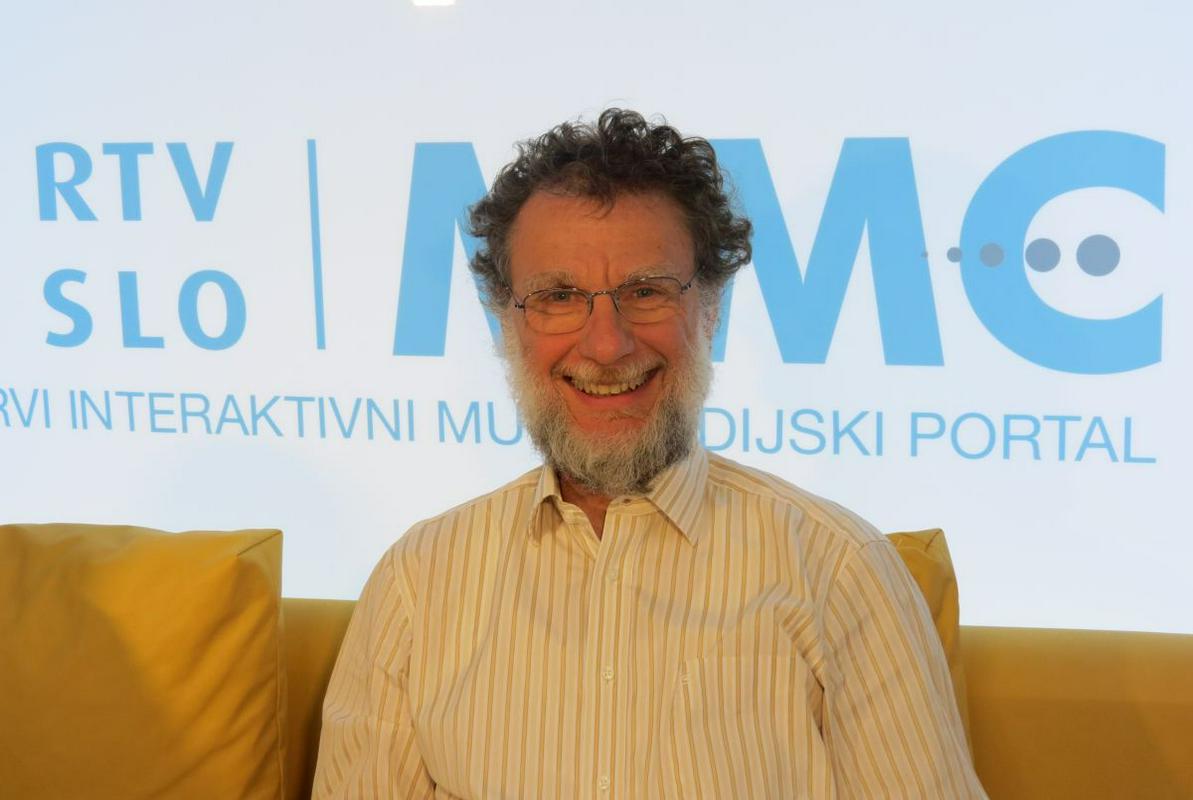
Research achievements are very important for our students at the Faculty of Mathematics and Physics, because the quality of studies is directly related to a vibrant research environment. Our teaching staff and students are doing active research in many forefront research collaborations worldwide. The last result is a notable research achievement which will be further developed in the near future. We are proud that it is already the fourth publication in the last 12 months in Nature and Science journals which has been co-authored by astronomers from the Faculty of Mathematics and Physics of the University of Ljubljana.
Zwitter became a scientific director and the second man of an international project called RAVE (Radial Velocity Experiment). The project involves 60 people from ten countries and institutes from Heidelberg, Potsdam, Strasbourg, Oxford, Cambridge, Australia, Canada and USA.
They have been achieving great success. Under the leadership of Tomaž Zwitter, an international team of astronomers with the assistance of Janez Kos produced the first three-dimensional map of interstellar absorption bands in the world. The article on this achievement was published on 15 August in Science, a renowned American scientific journal. Maps will be used in further examinations of the composition of bands, which absorb certain colours of starlight and have been confusing the astronomers for almost a hundred years.
"The space between the stars is not completely empty - it contains a few tens of atoms per cubic centimeter. These atoms also include large macromolecules, which are probably responsible for the absorption of light or the occurrence of absorption bands, and whose composition is yet to be discovered. Our research opens up a new approach with a precise examination of the light emitted by hundreds of thousands of stars, which is, while it travels to Earth, partially absorbed by these macromolecules, which enables us to determine the spatial arrangement of these molecules. The spatial arrangement enables to determine the physical properties of these macromolecules, namely their weight, size, and electrical charge," said Zwitter.
Rave project data have been used in the research and this project is considered the largest spectroscopic survey of stars in our galaxy so far. Hopefully, new projects will provide even more accurate data, which will enable to observe the movement of these macromolecules and find out where they come from.
"Maybe we will be able to find out where and when a supernova exploded in our part of the galaxy, which ejected these macromolecules and which appeared in the sky as a second sun in the times of our ancient ancestors. And finally, after almost a hundred years of research, it would be nice to finally be able to identify these large macromolecules, which can be classified somewhere between the miniature atoms and the much larger dust grains."
As a child, he used to enjoy watching the stars. When he was a Boy Scout, he would lay down on the floor, listen to twigs crackling and wind blowing, and watched the sky above him. Today, when he became a world-renowned scientist with more than 2,000 citations, he still preserved his children's sense of wonder over the depth and breadth of the sky above us.
"Nothing is more beautiful than to lie down on the ground in a beautiful, clear - and preferably not too cold - night and watch the sky above you moving slowly," he said. He is fascinated by the fact that "the probability of finding the Earth's duplicate is getting higher every day". And we are not talking about a few thousands of such planets, but of a few billion. He was recently awarded the Zois Award for his significant achievements in astronomy and astrophysics. "His most outstanding achievements include the measurements of escape velocity from our galaxy for stars in our solar neighbourhood, which are a new direct proof of the existence of dark matter in the outer halo of the Milky Way. Escape velocity measurements enabled the most accurate determination of the mass of our galaxy," says the award justification. "Slovenians often like to complain how bad the situation is, but the fact is that it is actually not as bad. We do not have bad students, nor bad universities. Students achieve excellent results also abroad. It is time for the general public to acknowledge that."
Vesna Žarkovič, SINFO
Research achievements are very important for our students at the Faculty of Mathematics and Physics, because the quality of studies is directly related to a vibrant research environment. Our teaching staff and students are doing active research in many forefront research collaborations worldwide. The last result is a notable research achievement which will be further developed in the near future. We are proud that it is already the fourth publication in the last 12 months in Nature and Science journals which has been co-authored by astronomers from the Faculty of Mathematics and Physics of the University of Ljubljana.

































































